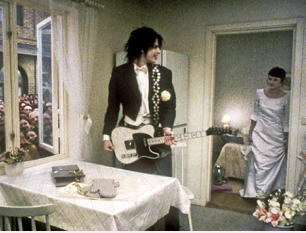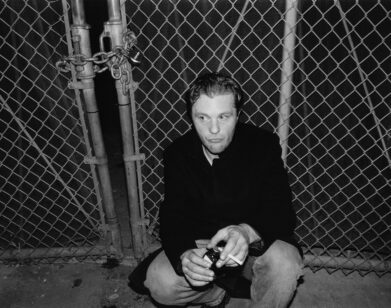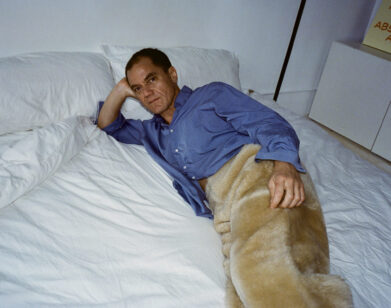Going Commercial

Commercials by Roy Andersson
Many an ambitious filmmaker would be a bit drained after a decade or two of making TV commercials, but the work seems only to have strengthened Roy Andersson. At 66, the Swedish writer-director (an eight-day retrospective of his work opens today at MoMA) is pouring a sensibility refined over years of short-form work-for-hire into his distinctive feature films.
Having proven himself in 1970 with a lyrical (and very successful) teen romance called A Swedish Love Story, Andersson suffered a “fabulous flop” (his words) with his 1975 follow-up, Giliap. It tanked so badly that he had to go into advertising. But, he embraced his new area of expertise, treating assignments from insurance and kitchenware companies as seriously as film productions. He built his own studio in Stockholm, where, since 1981, he’s shot just about everything he’s made, and became the best director of TV commercials in the world–at least according to Ingmar Bergman.
Spike Jonze and David Fincher got their start doing TV spots. Flashy and virtuosic, their work for mega-clients (including, in Jonze’s case, Ikea) has been impressive. But, it hasn’t had nearly as much personality as their film work. Andersson’s closest stateside equivalent may be Errol Morris, who did a campaign for Miller High Life about a decade ago that looked a lot like his documentaries-in particular, the re-enactments he’s famous for–and even made similar use of voiceover.
But while Morris uses his talent to fund his next serious project, it’s impossible not to see Andersson’s painstakingly-made films (two shorts in the 80’s and 90’s and two features in the aughts) as an extension of the aesthetic and tragicomic worldview he developed as an ad auteur.
As in his commercials, Andersson’s vignettes unfold in one take, from a single angle. With very few exceptions, his camera doesn’t move. The visual narrative unfolds within the frame, the way it does in painting. In fact, the influence of painters is everywhere in Andersson’s work, from Weimar caricaturists Otto Dix and George Grosz to the checkerboard floors that Renaissance artists used to bolster the illusion of depth, a key element in Andersson’s work. Using a wide-angle lens, soft lighting that casts no shadows, and deep focus, he turns the frame into a pellucid microcosm of modern society. Heads are always poking in through windows and open doors, and a favorite Andersson motif, the noisy neighbor, suggests a whole a realm of activity outside the frame without actually cutting to it.
Andersson’s films are filled with non-actors recruited for their body types. He is particularly fond of short, squat, narrow, bulbous Scandinavians. (The lardy salesman with a central role in his latest film, You, the Living, which opened at Film Forum this summer, is played by a man Andersson discovered at Ikea.) Andersson’s long-shot sight gags are reminiscent of silent comedies, as is the vaudevillian maquillage he puts on his actors, a quirk he somehow got away with in many of his commercials. As Andersson has said: “The room, the space, tells more about a person than his face.”
People in Andersson’s films, especially the petit bourgeois, are pathetic at best, petty and malevolent at worst. His sardonically titled 1991 short, World of Glory, begins with a screaming child being gassed in the back of a truck. Improbably, his 1987 short Something Happened began as an AIDS infomercial commissioned by the Swedish government. “They wanted something different,” Andersson has explained. The government pulled its funding once it got wind of scenes comparing modern inoculation-testing to Nazi atrocities.
Andersson’s Songs from The Second Floor, a grimly comedic fin-de-siecle exploration of guilt, won the 2000 Cannes jury prize. You, the Living is more about “people’s lives, their work, how they behave in society,” he says in a statement, a continuation of existential themes perhaps best illustrated in scenes in which crowds passively observe a complaining or suffering individual. Man is alone, surrounded by more of the same. But, according to Andersson, his jumping-off point for the film is an Icelandic proverb that goes, “Man is man’s delight.”
Filmmarker in Focus: Roy Andersson runs from September 10-18 at MoMA. MoMA is located at






